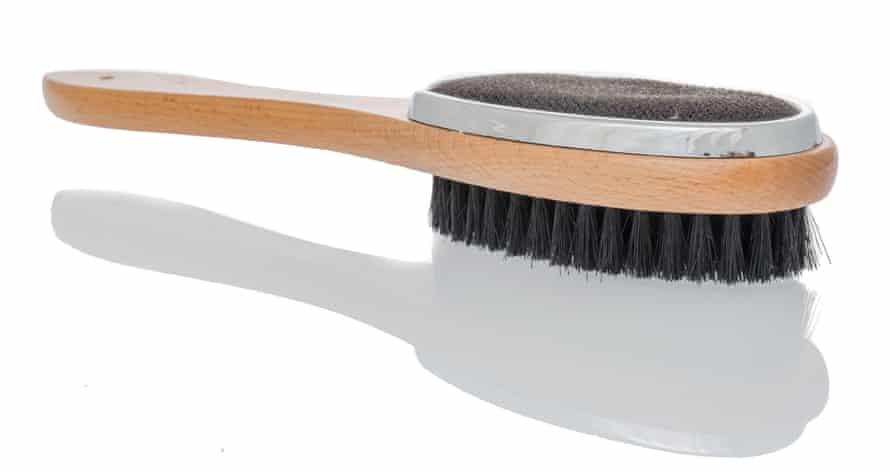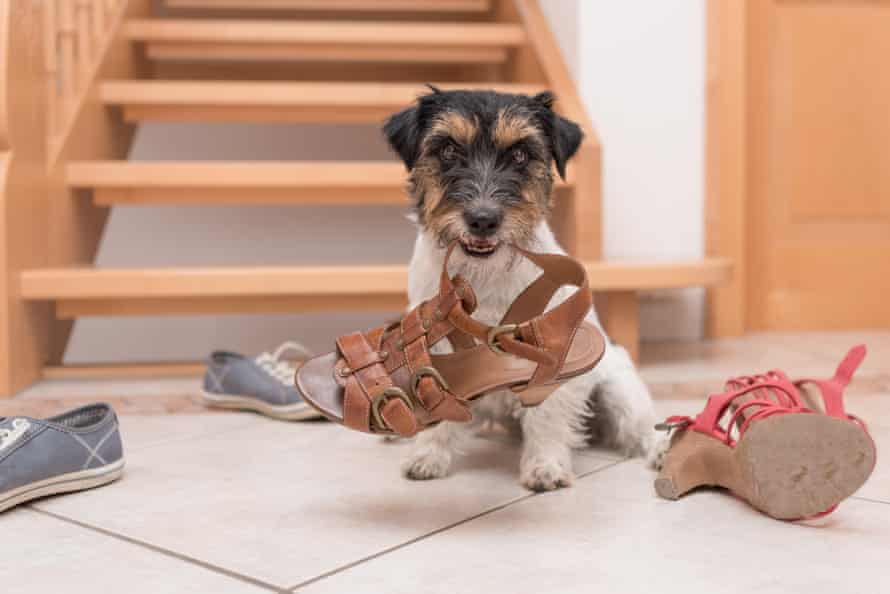
In between lockdowns last year, I spent a week in Gippsland with a friend and her border collie, Queenie. The first morning, Queenie came bounding into my room, leapt on my bed and wriggled around until I got up and took her outside.
We were staying on a big property on Lake Tyers. Queenie ran straight down the hill from the house towards the lake. By the time I caught up with her she had rolled in possum poo.
Not wanting my friend to be woken up by a smelly dog, I decided to hose Queenie down. Still in my pyjamas, pre-coffee. It was very unpleasant for both of us.
Possum poo aside, pets (especially Queenie) are a joy but can be troublesome when you’re trying to keep your clothes, shoes or pyjamas nice. This week some experts offer tips on protection and repair.
Implement good management
Although it may seem obvious, keeping dogs or cats out of certain spaces and remembering to carefully put shoes and bags out of reach in closed cupboards is the most straightforward way to prevent your things from being damaged or soiled by a pet.
The designer Christian Kimber owns a small beagle cross poodle called Ralph. To prevent Ralph’s hair from getting on his clothes he keeps him out of certain rooms of the house and off any furniture he, or his wife, Ren, might sit on. Kimber says: “We Scotchguard the rug and the couch too, which prevents dirt from sticking, particularly if his paws are damp for any reason.”
Removing pet hair
A straightforward solution to pet hair sticking to your clothes is to change into patting-friendly outfits as soon as you walk in the door. Kimber says, “when we know we’re spending a lot of time with him, we avoid dark colours” as Ralph is blonde, “ditto delicate fabrics like linen, silk or fine knits his nails might pull”.
Of course, this isn’t always practical and loose fur sticking to you is pretty inevitable. Kimber says, “the best way to minimise the fuzz … is to brush your pet regularly”, something it’s best to do outside.
Once the fur has already shed, Kimber suggests using a heavy-duty vacuum cleaner, “and all the attachments” to tackle any furniture that may transfer hair to your clothes. For garments he recommends a lint brush over sticky rollers (which can leave traces of stickiness on clothes), and says he always has one in the car, since “you can’t really avoid a fur bomb at close quarters”.

Cleaning expert Shannon Lush suggests a simple pair of rubber gloves for removing pet hair. Just wash your hands with the gloves on, and while they’re slightly tacky, run them over any garments (or other cloth surfaces like couches) that have hair on them. You can also use wet gloves to pat your dog or cat, from head to tail – all the loose hair should come off on the gloves, at which point you can gather the hair up into a ball for easy disposal.
It is also important to remove any fur from clothing before putting it in the washing machine, as washing isn’t that effective at removing hair from clothes.
Destructive pet behaviour
Dionna Newton, the founder of Animal Behaviour Australia, says when pets are chewing shoes, scratching things or peeing where they shouldn’t, “there’s a motivation behind why the animal feels the need to do that”.
If your new puppy has chewed on your favourite shoes, this can be because of a lack of mental stimulation. She says younger dogs get bored and “need more varied stimulation than we think” so it’s important to keep them entertained with games or walks.
If you have a cat that is urinating where they shouldn’t, the reasons can be more complicated. Sometimes, they can smell clothes that have been outside, and it is a territorial response. For particularly anxious cats, it may be because there is a new cat in the neighbourhood, or something in the house has changed, like the placement of furniture. Sometimes, it’s just because urinating releases feelgood chemicals.
If your cat is scratching things, Newton says to “make sure you have enough scratching posts, or things you don’t mind it scratching” around the house. It’s also important to provide the cat with different textures to scratch.
Newton says it’s worth getting a professional behavioural assessment to work out why the cat is behaving this way, and then solutions can be put in place.
Cleaning up accidents
Lush says to get rid of the smell of cat urine, you have to be sure you get rid of all of it, which can be tricky because cats spray when they pee. She recommends using an ultraviolet light to see exactly where pee might have landed, then marking all splashes with chalk.
To get the pee out of clothes, she suggests using white vinegar. Start by pouring the vinegar into a jug and stretching the affected garment over a large bowl, then pour the vinegar through the fabric, empty the bowl back into the jug and repeat until you feel satisfied the urine is gone. Then put the garment through a regular wash.
It is best to wash clothes using an enzyme-based detergent, as enzymes work to break down organic material so any residual odours should be eliminated. There are several laundry detergents on the market that deal specifically with pet urine, including a few laundry boosters that can be used as pre-treatment or in addition to regular detergent. Older urine stains will be harder to remove, so be sure to put clothes straight in the wash.
Repairing chewed shoes

The good news is, shoes and bags that have been attacked by a pet can usually be repaired. According to Jenny Velakoulis, the owner of Evans Leather Repair in Melbourne’s Royal Arcade, it’s pretty rare for them to see something so ravaged by an animal it has passed the point of no return.
Fixing a gnawed shoe or handbag requires a combination of taking the “bit that’s been chewed and mangled and building it up again”, as well as replacing soles, heels or straps that have been partially eaten. Velakoulis recommends having rubber soles added to all your shoes, because they make it much harder for a dog’s teeth to do damage.
There are also several products available, such as bitter sprays, that are designed to prevent your pet from chewing things.



